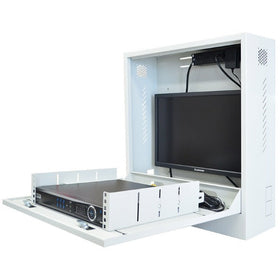
What is Wide Dynamic Range in Surveillance Cameras?
In the realm of surveillance technology, capturing clear and detailed images or videos in challenging lighting conditions can be a constant struggle.
Whether it's a brightly lit outdoor area with deep shadows or a dimly lit indoor space, conventional cameras may struggle to provide an accurate representation of the scene. However, Wide Dynamic Range (WDR) technology has emerged as a crucial solution to address this issue. In this blog, we will delve into what Wide Dynamic Range is and how it enhances the performance of surveillance cameras.
What is Wide Dynamic Range?
Wide Dynamic Range is a technology incorporated into surveillance cameras that enables them to handle a broad range of lighting conditions within a scene. The primary purpose of WDR is to ensure that both bright and dark areas of the image are adequately exposed, resulting in well-balanced and high-quality footage. This is achieved by effectively compensating for the extreme differences between the darkest and brightest parts of the scene.
Challenges of Standard Cameras in High-Contrast Scenes
Standard surveillance cameras without WDR often encounter difficulties when faced with high-contrast scenes. When the scene has areas with significantly different levels of brightness, such as a well-lit entrance hall with a dark alleyway visible through the door, the camera may struggle to capture the entire scene accurately. In such cases, the camera might either expose the bright areas correctly, resulting in dark and indistinguishable shadows, or expose the dark areas correctly, leading to overexposed and washed-out highlights.
How Does Wide Dynamic Range Work?
Wide Dynamic Range uses various techniques to manage these challenging lighting scenarios and deliver high-quality images and videos. The two primary methods used in WDR technology are:
-
Multiple Exposure WDR: In this technique, the camera captures several images of the same scene with varying exposure levels. One image is typically taken with a short exposure time to capture details in the brighter regions, while another image is taken with a longer exposure time to capture details in the darker areas. The camera then blends these images together, creating a final composite image that balances out the exposure across the entire scene.
-
Digital WDR: Digital WDR, also known as software-based WDR, processes the captured image to enhance details in both bright and dark areas. It uses sophisticated algorithms to analyze the image data and adjust the brightness levels accordingly, revealing more details in the shadows and highlights.
Benefits of Wide Dynamic Range in Surveillance Cameras
-
Enhanced Image Quality: WDR technology ensures that all parts of the scene are clearly visible, reducing the risk of important details getting lost in shadows or glare.
-
Increased Surveillance Efficiency: With WDR, surveillance cameras can effectively monitor areas with harsh lighting conditions, such as building entrances or windows, where conventional cameras might fail to deliver useful footage.
-
Better Identification and Recognition: By producing more accurate images, WDR aids in identifying individuals, license plates, or other essential elements in the surveillance footage, which is vital for security purposes.
Wide Dynamic Range is a critical advancement in surveillance camera technology, providing the ability to capture clear and well-balanced images in challenging lighting conditions. By overcoming the limitations of standard cameras and enhancing image quality, WDR ensures that surveillance systems can effectively monitor and record critical areas, making the world a safer place. As technology continues to evolve, we can expect even more impressive developments in surveillance cameras, but for now, WDR stands out as a crucial feature in modern surveillance setups.


